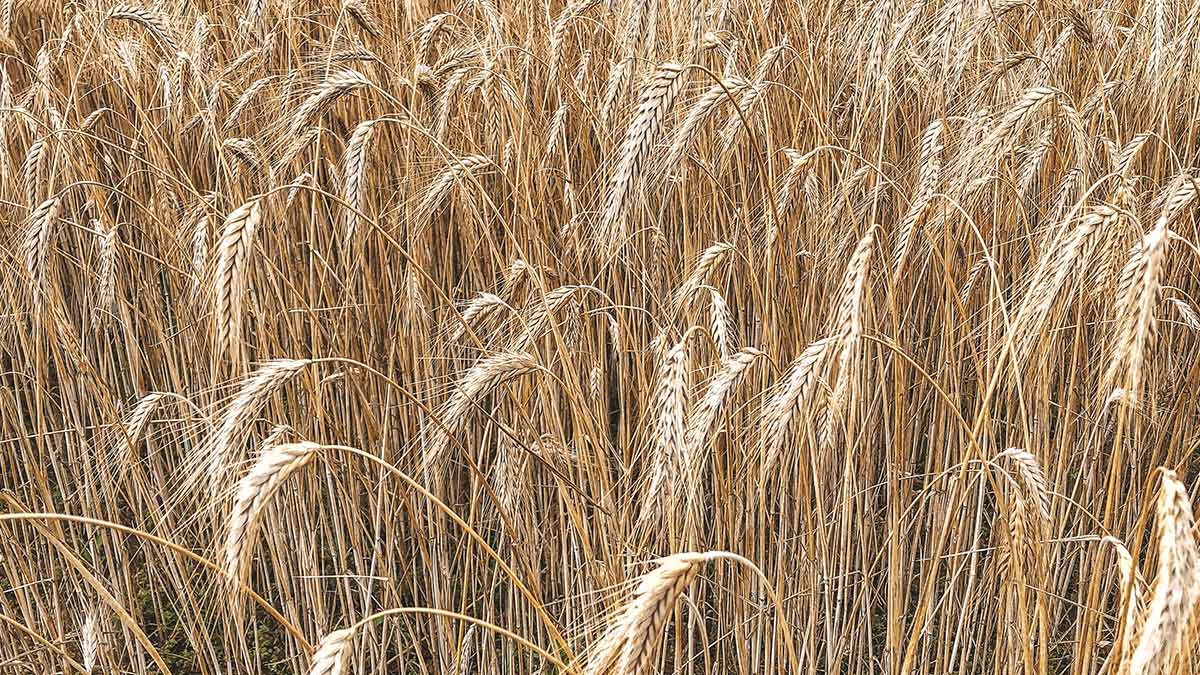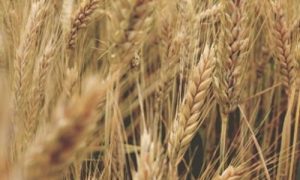“Septoria has been a massive yield robber for us”

The wheat harvest in Ireland began in early August, with yields varying significantly. Early crops averaged 3 tons per acre, while later ones reached 4.5 tons. Average moisture levels were around 21%, and bushel weights ranged from 70-74 KPH. Agronomist Kevin Looby highlighted that Septoria disease has been a major issue, exacerbated by adverse weather and reduced effectiveness of fungicides. Sowing dates varied, with October-sown crops facing higher disease pressure compared to November-sown ones.
The wheat harvest is well underway across the country. This week the Irish Farmers Journal spoke to Waterford based agronomist Kevin Looby who works with Pat Denn Agri.
Kevin said the wheat harvest kicked off on the 7 and 8 August. There was a nice but cut Saturday, Monday evening and combines started again on Wednesday.
So far yields are very variable. Early crops were at 3t/ac, while the average yield in the area last week was 3.5-3.7t/ac, and went as far as 4.5t/ac as progress was made. These crops were generally October sown.
The average moisture last weekend and into the middle of last week was about 21%, with a range of 18-21%. Bushel weights were coming in at 70-74 KPH.
Kevin explained that while lower than average yields were expected it’s disappointing because yields are still probably 0.5-0.75t/ac below where some of the crops looked.
“There’s a lot of debate and hard conversations going to have to be had when it’s all cut,” Kevin commented.
“Septoria has been a massive yield robber this year. We’ve probably had the highest disease-pressure year that I remember. “Are varieties slipping a bit? I think they are. Is the chemistry not as effective as it was? Possibly.
I haven’t seen trial data to say that one thing is working any more or any less than anything else.” Weather has played a massive role in disease levels and low yields.
“This is the first year in a good number of years where we’ve had extreme Septoria pressure right through, practically from the day of planting until now even, between wet weather and drizzly weather and damp and muggy conditions.
Lack of chemistry “It’s probably the first year that we’ve really seen the loss of Bravo [chlorothalonil] in a big way. Up until now, we were managing away okay with folpet and there was newer chemistry coming to the market.
“We just seem to be after hitting a wall and I think this year was the first year where the lack of chlorothalonil has really hit home in winter wheat,” Kevin noted. He added that the lack of sunshine has been a massive issue countrywide which hasn’t helped with grain filling.
Sowing date and disease Kevin noted that there were a range of sowing dates this season. Winter wheat planted in mid-October and early November had high levels of disease all year. October sown may have had slightly higher pressure, but November crops were dirty as well and Septoria kept going after June. A few crops of late-November sown wheat were slightly cleaner this year.
They were cleaner in the later part of the season he noted, but are thinner due to pressure from wet weather and crows, so the yield is expected to be lower. Kevin joined us on The Tillage Podcast, you can listen to the full episode here.
The wheat harvest is well underway across the country. This week the Irish Farmers Journal spoke to Waterford based agronomist Kevin Looby who works with Pat Denn Agri. Kevin said the wheat harvest kicked off on the 7 and 8 August.
There was a nice but cut Saturday, Monday evening and combines started again on Wednesday. So far yields are very variable. Early crops were at 3t/ac, while the average yield in the area last week was 3.5-3.7t/ac, and went as far as 4.5t/ac as progress was made. These crops were generally October sown.
The average moisture last weekend and into the middle of last week was about 21%, with a range of 18-21%. Bushel weights were coming in at 70-74 KPH.
Kevin explained that while lower than average yields were expected it’s disappointing because yields are still probably 0.5-0.75t/ac below where some of the crops looked. “There’s a lot of debate and hard conversations going to have to be had when it’s all cut,” Kevin commented.
“Septoria has been a massive yield robber this year. We’ve probably had the highest disease-pressure year that I remember. “Are varieties slipping a bit? I think they are. Is the chemistry not as effective as it was? Possibly. I haven’t seen trial data to say that one thing is working any more or any less than anything else.” Weather has played a massive role in disease levels and low yields.
“This is the first year in a good number of years where we’ve had extreme Septoria pressure right through, practically from the day of planting until now even, between wet weather and drizzly weather and damp and muggy conditions.
Lack of chemistry “It’s probably the first year that we’ve really seen the loss of Bravo [chlorothalonil] in a big way. Up until now, we were managing away okay with folpet and there was newer chemistry coming to the market.
“We just seem to be after hitting a wall and I think this year was the first year where the lack of chlorothalonil has really hit home in winter wheat,” Kevin noted.
He added that the lack of sunshine has been a massive issue countrywide which hasn’t helped with grain filling. Sowing date and disease
Kevin noted that there were a range of sowing dates this season. Winter wheat planted in mid-October and early November had high levels of disease all year.
October sown may have had slightly higher pressure, but November crops were dirty as well and Septoria kept going after June.
A few crops of late-November sown wheat were slightly cleaner this year. They were cleaner in the later part of the season he noted, but are thinner due to pressure from wet weather and crows, so the yield is expected to be lower.
Source Link : https://www.farmersjournal.ie/tillage/news/septoria-has-been-a-massive-yield-robber-for-us-831695















